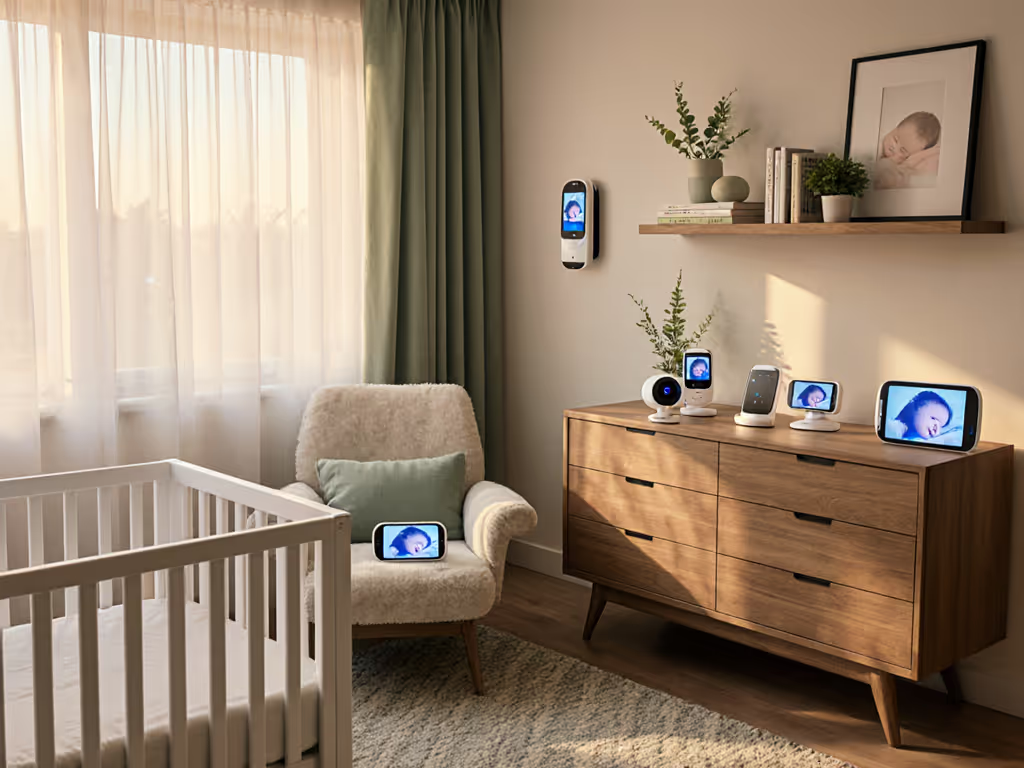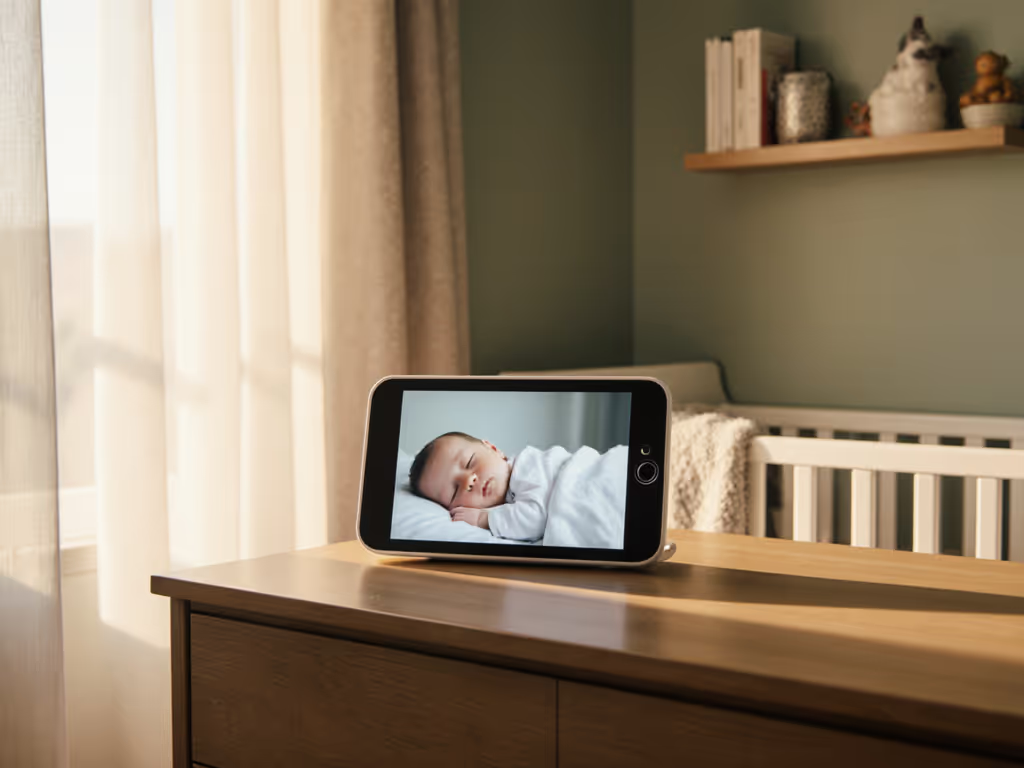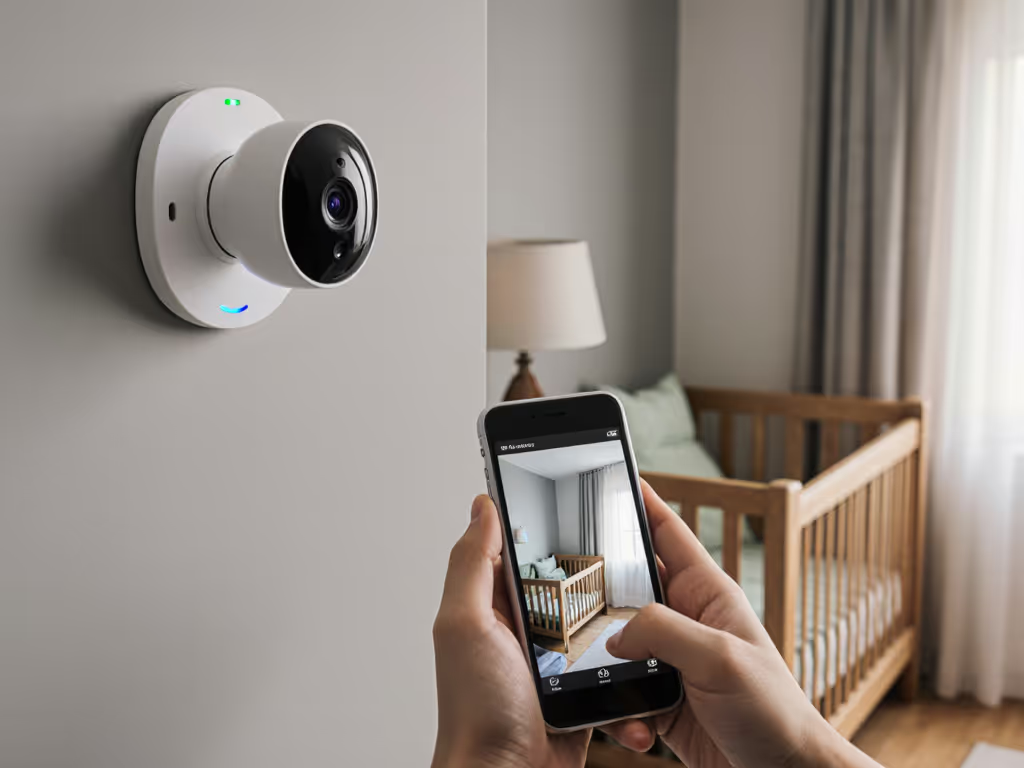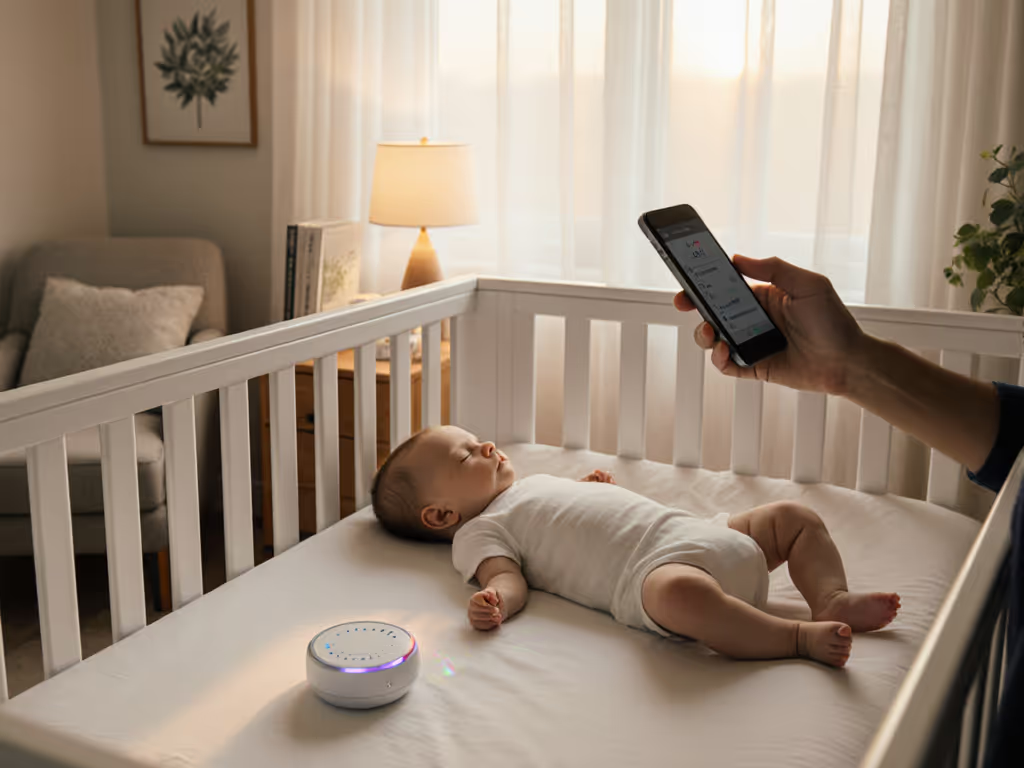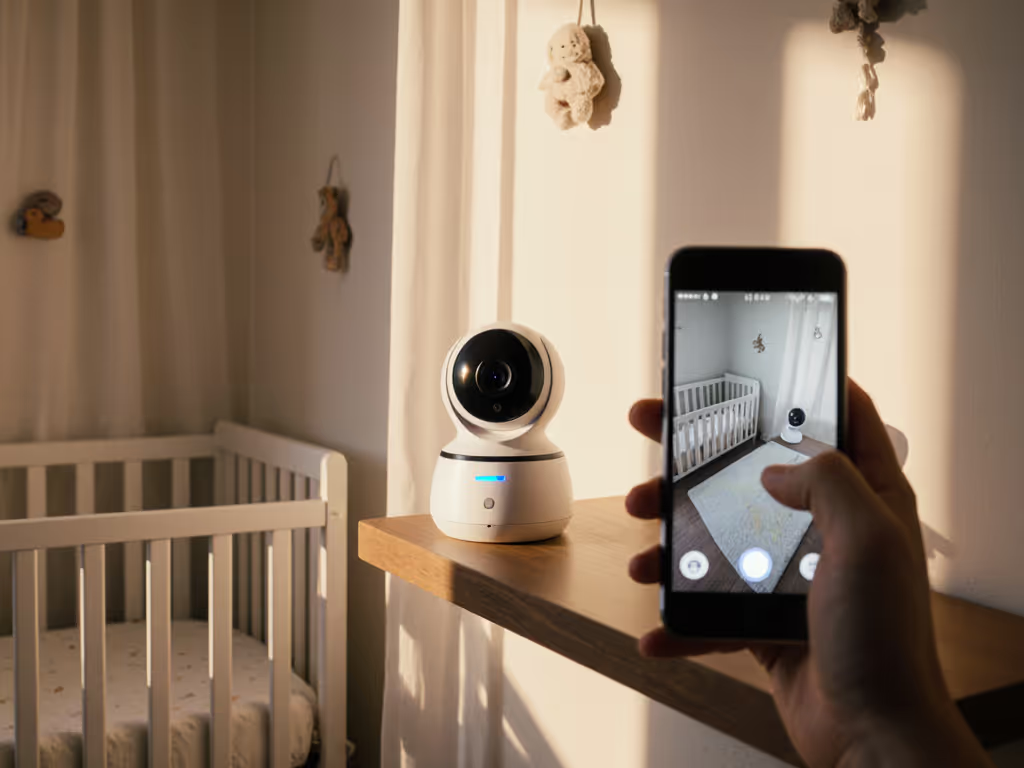
Breathing Monitoring Technology: Complete Guide for Parents
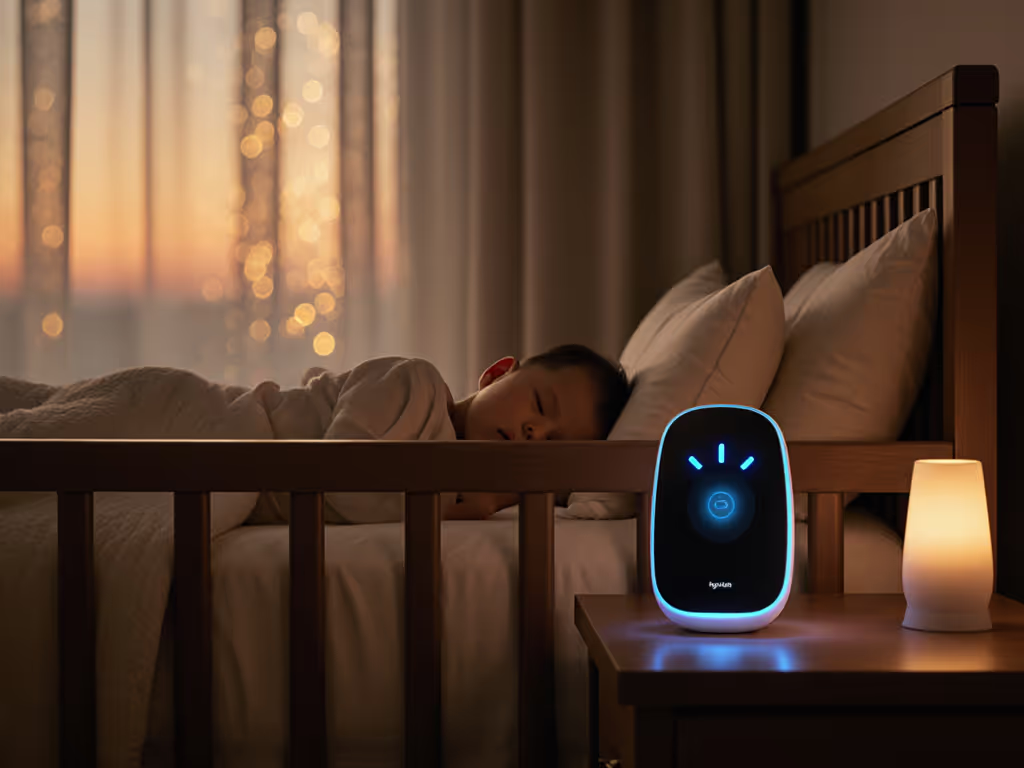
More than one in three new parents say technology helps them sleep better at night by easing worries about their baby’s health. With unexpected events like breathing pauses a primary concern, many families turn to digital monitoring for peace of mind. Breathing monitoring technology now offers real-time insights and specialized features that promise both reassurance and advanced support for different infant needs.
Key Takeaways
| Point | Details |
|---|---|
| Breathing Monitoring Technology | These devices track infants' respiratory patterns using sensors, but are not a substitute for professional medical advice. |
| Monitor Types | Major categories include wearable monitors, contactless sensor monitors, and under-mattress sensor pads, each with distinct pros and cons. |
| Consult Healthcare Professionals | Parents should seek guidance from pediatricians to assess whether a breathing monitor is necessary for their child's health status. |
| Privacy and Security | It is crucial to evaluate the data protection measures of breathing monitors, prioritizing devices with strong encryption and secure connections. |
What Is Breathing Monitoring Technology?
Breathing monitoring technology represents an advanced digital approach to tracking an infant's respiratory patterns and vital signs. These specialized devices use sensor technologies to continuously monitor a baby's breathing rate, movement, and sometimes heart rate, providing parents with real-time insights into their child's physiological status.
At its core, breathing monitoring technology utilizes several detection mechanisms:
- Sensor-based chest belts that track chest wall movement
- Wireless sensor pads placed under the baby's mattress
- Video-based computer vision algorithms that detect subtle chest movements
- Wearable devices with advanced respiratory tracking capabilities
While these technologies sound promising, the American Academy of Pediatrics cautions that home breathing monitors should not be considered a definitive tool for reducing sudden infant death syndrome (SIDS) risk in healthy, full-term infants. Specifically, periodic breathing variations are often normal, and unnecessary monitoring might create unwarranted parental anxiety.
Medically speaking, apnea monitors are most appropriate for premature infants or those with specific health conditions. These specialized devices can sound an alarm when breathing becomes shallow or stops completely, providing critical monitoring for at-risk newborns. Parents should always consult pediatric healthcare professionals to determine whether a breathing monitor is medically recommended for their specific situation.
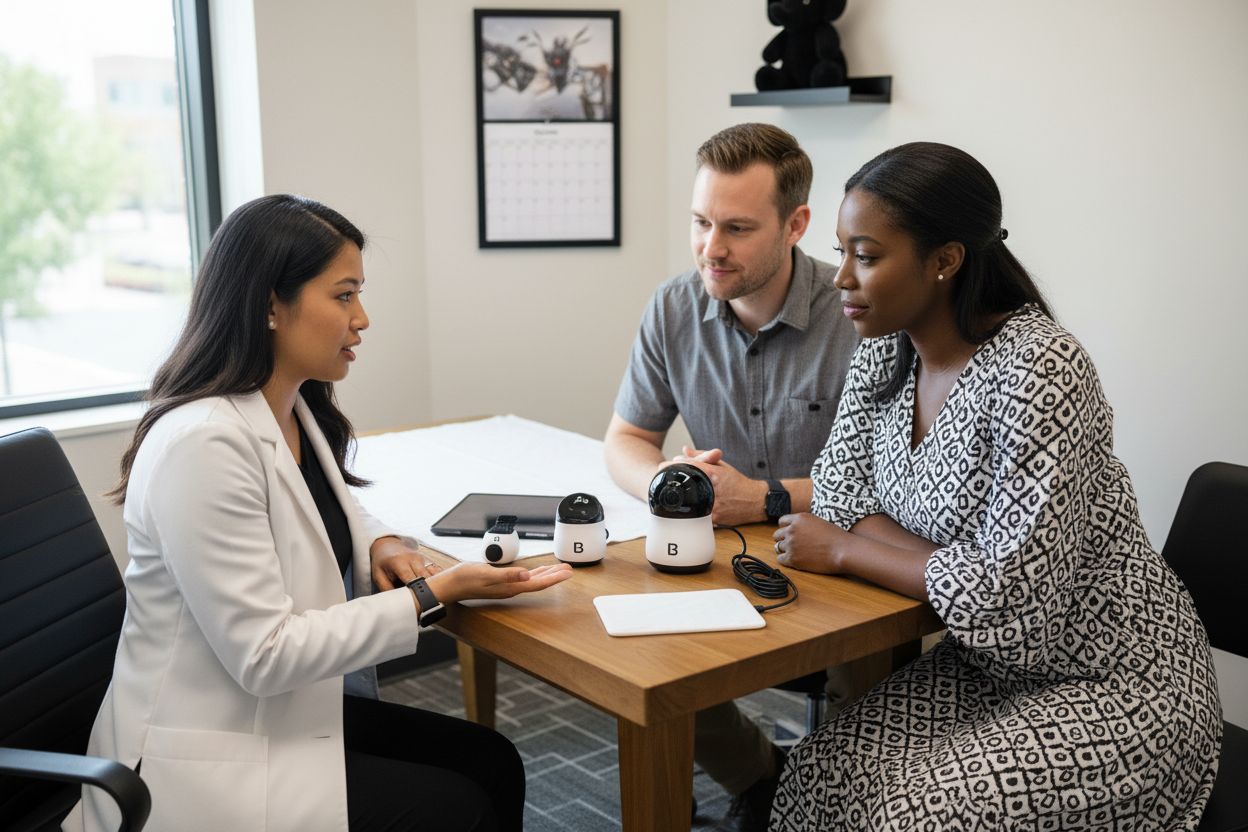
Types of Breathing Monitors for Babies
Breathing monitors for babies have evolved significantly, offering parents diverse technological solutions to track their infant's respiratory patterns. These devices can be broadly categorized into four primary types, each with unique monitoring approaches and technological advantages.
Wearable Monitors
Wearable breathing monitors attach directly to the baby's body, providing close-proximity tracking:
- Foot-sock monitors: Wrap around the baby's foot, measuring oxygen levels and heart rate
- Diaper-clip monitors: Attach to the diaper, tracking abdominal movement and breathing rhythm
- Pros: Direct body contact, immediate alerts
- Cons: Potential for sensor displacement, comfort concerns
Contactless Sensor Monitors
Contactless monitors represent the newest technological advancement in infant breathing tracking. These systems use advanced camera and AI technologies to monitor respiratory patterns without physical contact:
- Camera-based systems track chest movement and breathing
- Utilize computer vision and machine learning algorithms
- Provide stable monitoring without direct body attachment
Under-Mattress Sensor Pads
Mattress sensor pads offer a non-invasive monitoring solution:
-
Placed beneath the baby's mattress
-
Detect micro-movements and breathing patterns
-
Minimize disruption to infant's sleep environment
-
Best for parents seeking unobtrusive monitoring
Here's a comparison of the primary types of baby breathing monitors:
| Monitor Type | Monitoring Method | Pros | Cons |
|---|---|---|---|
| Wearable | Body sensors (foot, diaper) | Direct contact<br>Immediate alerts | Comfort issues<br>Sensor displacement |
| Contactless | Camera & AI tracking | No physical contact<br>Unobtrusive | Potential privacy risks<br>Network security needed |
| Under-Mattress Pad | Pressure/motion detection | No body attachment<br>Minimizes sleep disruption | May misread movements<br>Setup sensitive to mattress |
![]() |
|
While these technologies offer impressive monitoring capabilities, experts recommend consulting pediatric professionals to determine the most appropriate solution for individual family needs. Not all monitors are recommended for healthy, full-term infants, and unnecessary monitoring could potentially increase parental anxiety.
How Breathing Monitoring Devices Work
Breathing monitoring devices employ sophisticated sensor technologies to track an infant's respiratory patterns through multiple detection mechanisms. These advanced systems convert subtle physical movements into measurable data, providing parents with real-time insights into their baby's breathing status.
Detection Mechanisms
Breathing monitors utilize different technological approaches to capture respiratory information:
- Motion Sensors: Track chest wall movement and abdominal expansion
- Acoustic Monitoring: Use microphones to detect breathing sounds and rhythms
- Computer Vision: Analyze video feeds to measure chest movement
- Pressure Sensing: Detect micro-movements through mattress or wearable sensors
Signal Processing and Analysis
Advanced algorithms transform raw sensor data into meaningful breathing metrics. These systems continuously monitor:
- Respiratory rate (breaths per minute)
- Breathing pattern consistency
- Potential irregularities or pauses in breathing
- Correlation between movement and respiratory cycles
Researchers have even developed innovative technologies like the BreathJunior smart-speaker system, which uses reflected sound analysis to monitor infant breathing without physical contact. This groundbreaking approach demonstrates how machine learning and acoustic technologies can provide non-invasive respiratory tracking.
While these technologies offer impressive monitoring capabilities, parents should remember that not all devices are medically recommended for healthy infants. Consulting pediatric healthcare professionals remains crucial in determining whether a specific breathing monitor is appropriate for your child's unique health circumstances.
Privacy, Security, and Data Protection Issues
Digital baby monitoring technologies introduce complex privacy challenges that parents must carefully navigate. While these devices offer unprecedented insights into infant health, they simultaneously create potential vulnerabilities in personal data protection and home network security.
Key Privacy Vulnerabilities
Breathing monitoring devices present several critical privacy concerns:
- Video Data Transmission: Camera-based monitors stream sensitive visual information
- Network Connectivity: Wi-Fi enabled devices create potential hacking risks
- Personal Health Data: Continuous respiratory tracking generates intimate health records
- Cloud Storage: Recorded information might be stored on external servers
Data Security Considerations
Encryption and network protection become paramount when selecting a breathing monitor. Parents should prioritize devices that offer:
- End-to-end data encryption
- Secure, password-protected connections
- Local data storage options
- Regular software security updates
- Transparent privacy policy documentation
Contact-free camera monitoring systems represent an interesting privacy trade-off. While they eliminate wearable sensor concerns, they still transmit sensitive video and breathing data over wireless networks. This means parents must thoroughly investigate the manufacturer's security protocols and data handling practices before implementation.
Ultimately, the decision to use a breathing monitor requires balancing technological benefits against potential privacy risks. Careful research, understanding device specifications, and maintaining robust home network security can help mitigate potential data exposure concerns while providing valuable infant monitoring capabilities.
Comparing Breathing Monitors to Alternatives
Breathing monitors represent just one approach to infant safety, and parents have multiple strategies for ensuring their baby's well-being. Understanding the strengths and limitations of these technologies helps families make informed decisions about infant monitoring and care.
Safe Sleep Practices
Pediatric experts consistently emphasize that safe sleep practices are far more critical than technological monitoring:
- Placing infants on their back to sleep
- Using firm, clear mattresses
- Avoiding loose bedding and soft objects
- Maintaining consistent room temperature
- Creating a clutter-free sleep environment
Medical Monitoring Alternatives
For medically complex infants, professional healthcare solutions offer more comprehensive respiratory support:
- Pulse Oximetry: Continuous oxygen level monitoring
- Non-Invasive Ventilation: Therapeutic respiratory support methods
- Hospital-Grade Respiratory Monitoring: Advanced diagnostic technologies
- Professional medical equipment with real-time clinical interventions
While home breathing monitors provide a sense of security, they cannot replace professional medical assessment or substitute fundamental safety practices. The American Academy of Pediatrics repeatedly warns that these devices should not be considered definitive protection against sudden infant health events.
Ultimately, parents should view breathing monitors as supplementary tools, not primary safety mechanisms. Consulting pediatric professionals, maintaining rigorous safe sleep practices, and understanding individual infant health needs remain the most effective strategies for infant care and protection.
Choose Peace of Mind with Expert Baby Monitor Guidance
Parenting brings many challenges and the quest for reliable breathing monitoring technology often starts with questions about privacy, security, and real-world device performance. If you have felt overwhelmed by the vast choices, privacy trade-offs, or confusing sensor technologies mentioned in this guide, you are not alone. Many parents struggle to balance their desire for real-time breathing insights with concerns about data protection and setup difficulties.
You deserve trusted information so you can protect your family while feeling confident about your decisions. Visit Baby Monitors for Parents to explore our expert advice on privacy-focused monitors and in-depth reviews, including devices like the Miku Pro 2 and Nanit Pro. Discover step-by-step guides to help you find secure, easy-to-use solutions that match your home and your values. Make your choice today to give your baby the safest start possible. Start comparing your options now at https://babymonitorsforparents.pro.
Frequently Asked Questions
What is breathing monitoring technology for infants?
Breathing monitoring technology is an advanced digital method used to track an infant's respiratory patterns and vital signs using various sensors. These devices provide real-time insights into a baby's breathing rate, movement, and sometimes heart rate.
What types of breathing monitors are available for babies?
There are three primary types of breathing monitors for babies: wearable monitors (like foot-sock or diaper-clip devices), contactless sensor monitors (using cameras and AI), and under-mattress sensor pads. Each has unique advantages and disadvantages in monitoring respiratory patterns.
How do breathing monitoring devices work?
Breathing monitoring devices use sensor technologies that track movements related to respiration. They analyze data from motion sensors, acoustic signals, and computer vision to provide real-time measurements like respiratory rate and potential irregularities in breathing patterns.
Are breathing monitors recommended for healthy infants?
The American Academy of Pediatrics advises that home breathing monitors should not be relied upon to reduce the risk of sudden infant death syndrome (SIDS) in healthy, full-term infants, as periodic breathing variations are often normal. Always consult a pediatric healthcare professional to determine the appropriateness of using a breathing monitor for your infant.

